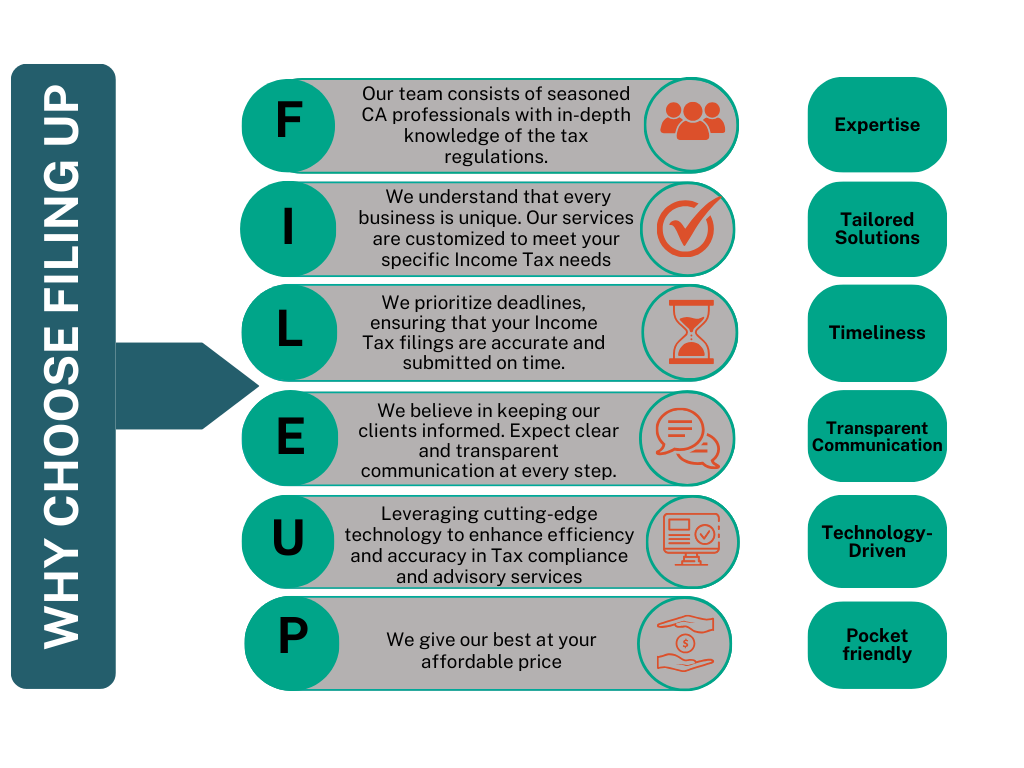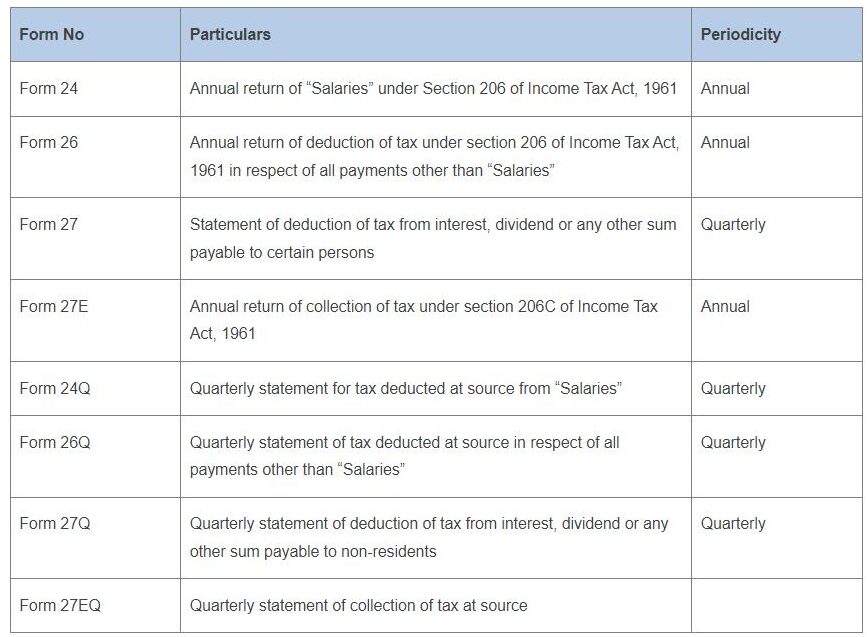TDS Return Filing
TDS (Tax Deducted at Source) return filing is a mandatory process in which individuals or entities who have deducted tax at source are required to report this information to the Income Tax Department. TDS is a system where tax is deducted at the time of making specified payments such as salary, interest, rent, commission, etc. The entity making such payments deducts a certain percentage of tax before making the payment and then remits it to the government.
The TDS return is a statement that summarizes details of TDS deducted and deposited with the government. It includes information about the deductor (the entity deducting tax), deductee (the person from whose payment the tax is deducted), and details of the tax deducted.
The TDS return filing process involves submitting the TDS return forms, which vary based on the nature of payments. The frequency of filing TDS returns depends on the category of the deductor (individual, company, etc.) and the type of payment.
Filing TDS returns accurately and within the specified deadlines is crucial to ensure compliance with tax regulations and avoid penalties. The process is usually done online through the government’s designated TDS filing portal.
EASY Process with FilingUp

Why choose FilingUp

Pricing Summary:
Market Price
₹1499
Our Price
₹1499
Quick Contact !
Documents Required
- TAN details
- PAN details
- Last TDS filing details, if applicable
- The period for which TDS has to be filed
- Date of incorporation of the business
- No. of transactions for filing TDS returns
- Name of the entity – Proprietorship/ Partnership/ Company/ LLP
Process of filing TDS returns:-
Step 1: Begin by completing Form 27 A, which includes various columns. If opting for a hard copy, ensure verification alongside the electronically filed E-TDS return.
Step 2: Proceed to accurately fill and reconcile the deducted tax at the source and the total payment amount.
Step 3: Specify the TAN of the organizations in Form 27 A. Precision is crucial, as inaccuracies in the TAN can impede the verification process.
Step 4: When filing TDS returns, provide the correct challan number, payment mode, and tax details. Incorrect entries, such as the wrong challan number or payment date, may result in discrepancies, necessitating the need for re-filing.
Step 5: Maintain consistency by using the fundamental Form for e-TDS filing. Enter the 7-digit BSR for streamlined reconciliation.
Step 6: Physically submit TDS returns at the TIN FC managed by NSDL. Alternatively, for online filing, submit them on the official NSDL TIN website.
Step 7: Upon accurate submission, receive a token number or provisional receipt as proof of filed TDS returns.
Step 8: In the event of rejection, an non-acceptance memo, along with reasons for rejection, is issued. Subsequently, the returns must be refiled.
FORMS to be used for filing annual/quarterly
TDS/TCS returns?

FAQs
Who is required to file e-TDS return?
As per Section 206 of Income Tax Act all corporate and government deductors are compulsorily required to file their TDS return on electronic media (i.e. e-TDS returns). However, for other Deductors, filing of e-TDS return is optional.
Who is required to file e-TDS return?
As per Section 206 of Income Tax Act all corporate and government deductors are compulsorily required to file their TDS return on electronic media (i.e. e-TDS returns). However, for other Deductors, filing of e-TDS return is optional
What is e-TDS Return?
TDS return can be best described as the quarterly statement or summary of all TDS-related transactions made during the specific quarter. Typically, it comprises details of the TDS collected and deposited to the Income Tax Authority by the deductor.
Who is an e-TDS Intermediary?
CBDT has appointed National Securities Depository Ltd., Mumbai as e-TDS
What is the TDS rate on salary?
Every employer must deduct TDS on salary at what is known as the ‘average rate of income tax’ of the employee for the year. It is denoted as Average Income tax rate = Income tax liability (arrived at based on slab rates) divided by the employee’s predictable income for the assessment year.
Is the TDS return required?
Even when an individual’s income falls below the basic exemption limit, the government has now mandated the filing of income tax returns if the total TDS/TCS for the financial year amounts to ₹25,000 or above.
Who may receive a TDS refund?
You have the option to claim a TDS refund for any extra amount deducted when you pay taxes at a rate of 5%. Similarly, you can request a TDS refund for any surplus TDS deducted from your income due to your employer not receiving proofs of your 80C investments or rent receipts for your house rent allowance.
